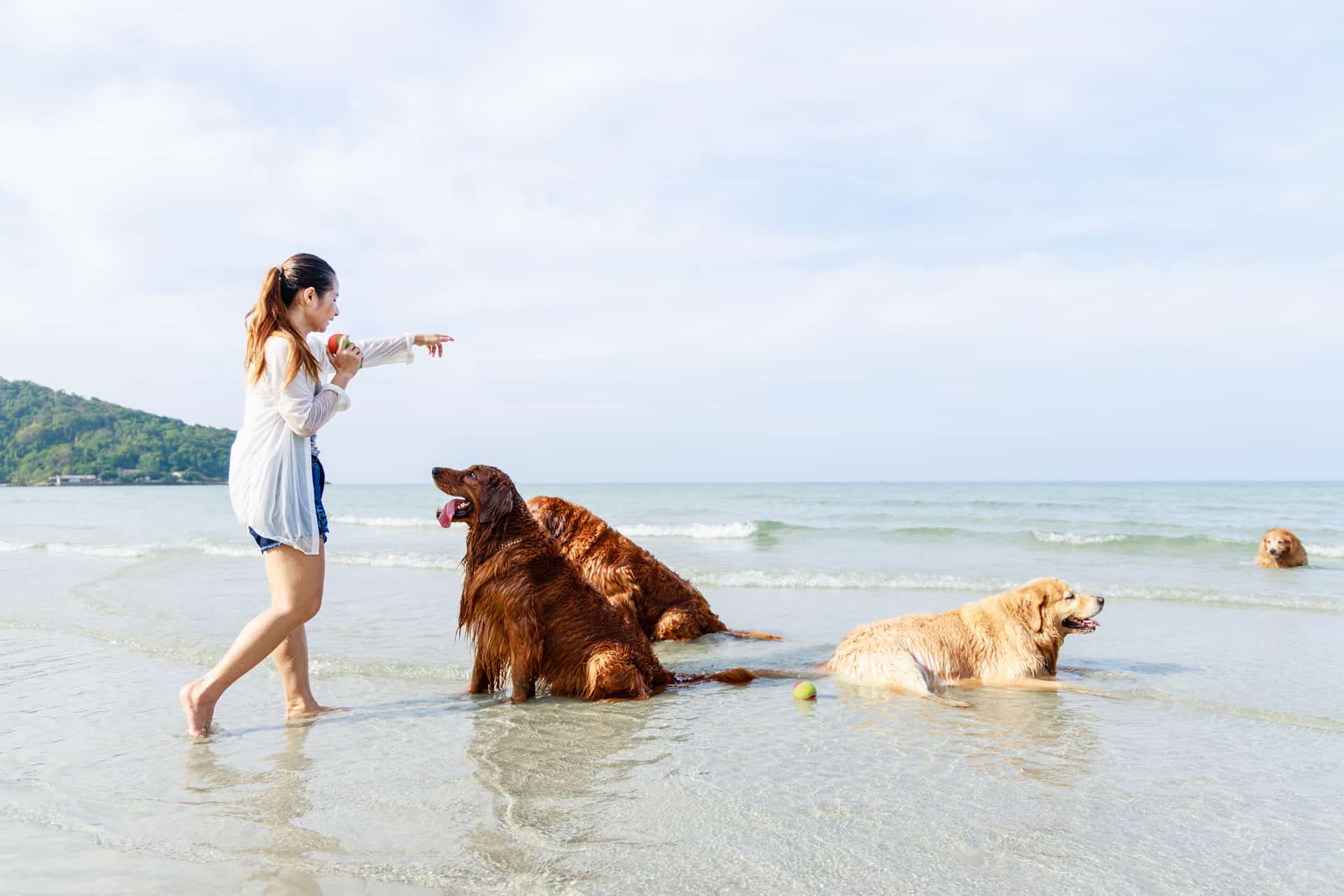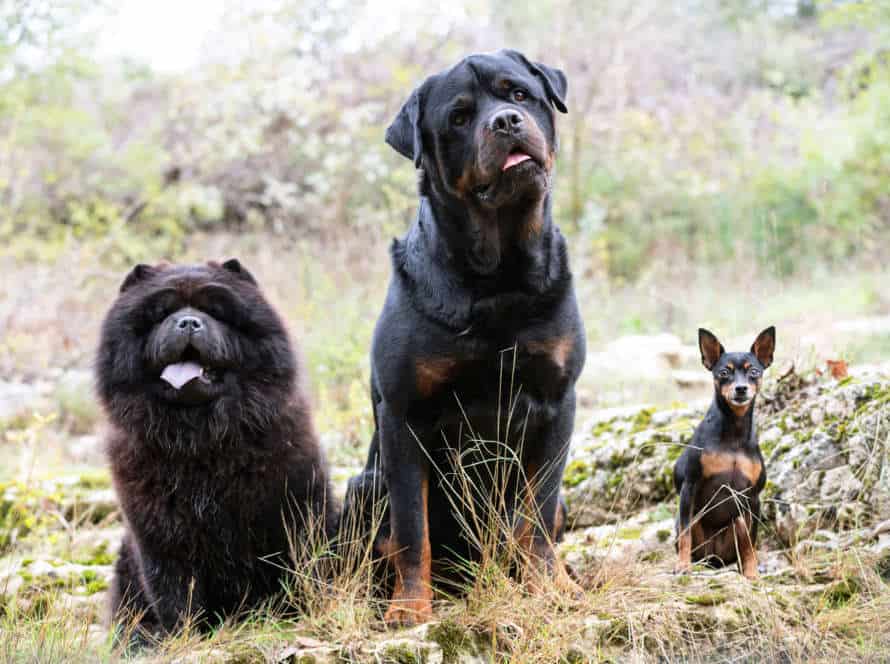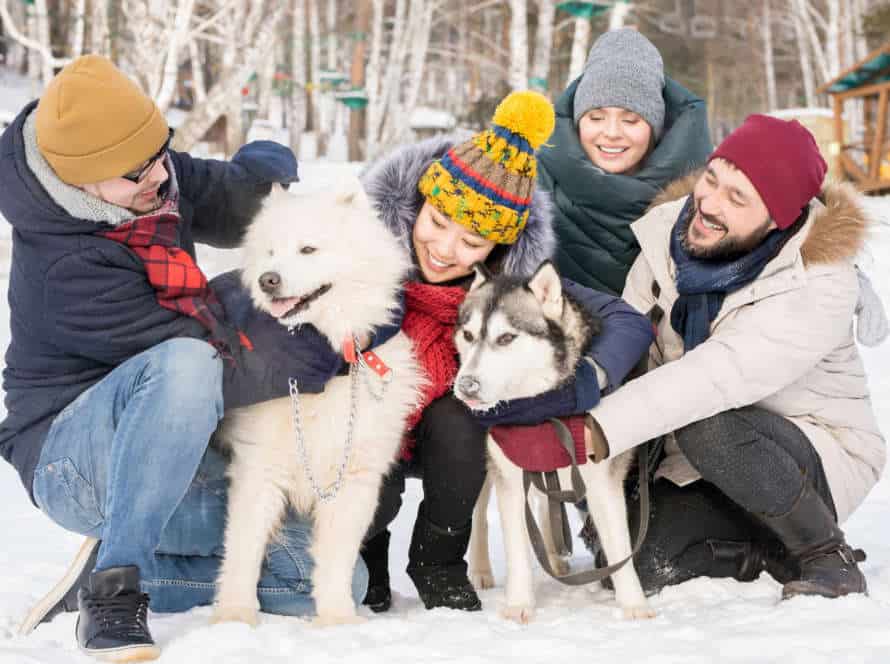Understanding Your Dog’s Temperament: Key Factors
“Average Salary in Top 5 Cities in the United States”
Factors that influence dog temperament
Comprehending your pup’s character is key for a tranquil relationship between you two. Why? Character ascertains how a pooch acts and answers its atmosphere.
Genes, socialization, training and health all have an influence on character. In this piece, we’ll investigate each of these components, and how they can shape a pup’s temperament.
Genetics and Breed
Genetics and breed traits influence a dog’s temperament. Even so, every pup is one-of-a-kind and may differ. Here are some aspects that can affect a pooch’s personality:
- Genetics: Canines’ genetic makeup shapes behavior, character, and risk for certain health problems. Researching the breed’s genetics is key for understanding how these might affect the pup’s temperament.
- Early socialization: Introducing a puppy to different people, sounds, and surroundings from an early age can help make them well-rounded and reduce the chance of behavioral issues.
- Training: Training and reinforcement that’s positive can shape a pup’s temperament and behavior.
- Environment: A pup’s surrounds can change their temperament. Dogs who live in high-stress environments or are mistreated often develop behavior problems. Providing a loving home is a great way to positively impact their character and conduct.
Remember, temperament can transform over time due to age, health, and life changes. It’s important to keep an eye on the pup’s temperament and adjust training and socialization techniques as needed.
Early Socialization
Early socialization is essential for shaping a dog’s temperament. It helps them learn how to act around people, other animals, and different environments.
Start the process early, between 3 and 14 weeks. Introduce your pup to new sounds, smells, people, animals, and environments gradually.
Reward good behavior and use treats to encourage positive interactions.
This sets a strong foundation for a sociable adult dog. It reduces the risk of behavioral issues later on.
Experience with People and Other Dogs
A pup’s environment and past relationships with people and other dogs hugely impact their temperament. Here are the core factors to consider:
- Genetics: Certain breeds are more outgoing and friendly, while others are more timid or anxious. Genetics have a major influence on a dog’s temperament.
- Early Socialization: If puppies meet different people, animals, and places during the first few months of life, they’re more likely to form positive relationships and grow into a confident adult.
- Trauma and Abuse: Dogs that have been mistreated or rescued from a difficult situation may be scared and aggressive around people and other dogs.
- Training and Reinforcement: Regular training and positive techniques can help dogs conquer their worries and learn to act politely and sociably around others.
Remember: Knowing a doggy’s temperament is key to giving them the best care, training, and socialization throughout their life.
How to Identify Your Dog’s Temperament
Identifying your dog’s temperament is essential. It helps us understand why they act how they do. This combination of traits and environmental influences forms a unique personality.
Let us delve into how we can uncover our pup’s temperament.
Observe your dog’s behavior
Checking your pup’s behavior is a must to understand their nature and needs. Here are some tips to observe their behavior:
- See how they act with people. Friendly, reserved, or hostile?
- Notice reactions to new stuff – scared, inquisitive, or excited?
- Take note of their energy and activity – lively and fun or relaxed?
- Observe body language – posture, ears, and facial expressions show how they feel.
By monitoring your dog’s behavior, you can get a better grasp of their temperament so you can give them the right training, socializing, and care.
Conduct a temperament test
Understanding a pup’s temperament is a great way to get to know them better. You need to consider a few key factors when testing:
- Sociability – Does your pup like humans and other animals?
- Trainability – Can your pup learn and obey commands?
- Fearfulness – Is your pup scared of anything?
- Aggressiveness – Is your pup aggressive towards humans or animals?
Once you’ve figured out these elements, you can start testing. This can include observing behaviour in different scenarios, playing with toys, and training activities.
It’s important to get to know your pup’s temperament, as it will help with building a strong relationship and keeping everyone safe.
Consult with a professional trainer or behaviorist
Consulting with a pro, trainer or behaviorist is key in order to identify your pup’s temperament. This will help decide the best strategy to address or prevent behavior problems.
The specialist will be able to evaluate your dog’s temperament according to various elements such as breed, life experiences, and environment. They will also suggest appropriate training methods and techniques to help you maintain a positive and healthy relationship with your furry buddy.
Moreover, a pro can assist you to understand your dog’s behavior, body language, and communication signals. This will build your ability to recognize and respond to your pup’s needs effectively.
If your dog shows aggressive behavior, separation anxiety, or any other major behavioral issues, consulting a professional is especially beneficial.
Pro Tip: When consulting a professional, ask the right questions, talk about your anxieties and expectations realistically, and consistently follow their advice.
Different Types of Dog Temperaments
Dogs vary in size and shape. Knowing a dog’s temperament is key to understanding its behaviour. This article will investigate the various dog temperaments, associated behaviours and how to keep your dog healthy and content.
Energetic or Active
A dog’s temperament plays an important role in its behavior, interactions, and needs. Active or energetic dogs need plenty of physical activity, mental stimulation, and socialization.
Here are some of their key traits and needs:
- They love running, playing, and spending energy.
- Need regular exercise and outdoor activities, like fetching, hiking, or swimming.
- Without mental and physical stimulation, they may become destructive or develop issues.
- Thrive on socializing with humans and other dogs, as they require interaction and play.
Knowing your pup’s temperament can help you give the best care, training, and lifestyle that suits their individual needs and personality.
Aggressive or Reactive
Recognizing your dog’s temperament is key to understanding them. This could be aggressive or reactive. Though these terms are sometimes used interchangeably, they are different in terms of behaviour. Aggressive dogs will often bite, posture, growl and bark. They may show dominant behaviour and fear responses, like guarding or protecting their area. Reactive dogs, however, have extreme reactions to other dogs, new people and noises. They may be anxious or fearful and display fight or flight behaviour.
Knowing your dog’s temperament is vital for giving them appropriate training, exercise and socialisation. Pro tip: When dealing with aggressive or reactive dogs, always use safety measures such as leashes or muzzles, and get professional help if needed.
Shy or Timid
Shy or timid dogs are a common type of pup that need special care. Training and socializing them can be tough, but with patience and positive reinforcement, strong bonds can form between them and their owners.
Here are some tips for dealing with shy doggos:
- Socialize early. This is key for learning how to interact with other dogs and people.
- Reward-based training is best. Harsh training methods may make them more anxious.
- Be patient. It takes time and patience to gain trust and build confidence.
- Keep your behavior, commands, and routine consistent. This can help them feel more secure.
- Praise and reward for good behavior. This helps to build trust and confidence.
Pro Tip: Consult a professional if you need help training or socializing your pup.
Training Strategies for Different Temperament Types
Training your dog? It’s vital to consider their temperament. Different temperaments need different techniques. To get the best results, take note of these key factors affecting your dog’s temperament and adjust your training accordingly. Let’s have a look at these factors.
Energetic or Active: How to channel that energy
It’s key to grasp your pooch’s temperament to give the right training strategies to channel their energy. Whether your pet is energized or active.
Training Strategies for Energetic Dogs:
These pups are high-energy and need regular exercise options. Do training activities that stimulate their minds and bodies, like agility training or scent work. Set regular playtimes and exercise sessions throughout the day so they can be calmer to train.
Training Strategies for Active Dogs:
Active dogs need mental stimulation and outlets for their energy. Go on daily walks and runs to keep them physically content. Give mental stimulation through interactive toys or puzzles. Get them to use their energy productively by teaching them helpful tasks, such as fetching items or bringing in the mail.
Knowing your dog’s temperament and giving the right training strategy will help cultivate a healthy, loving, and trusting relationship between you and your canine companion.
Aggressive or Reactive: How to manage and modify aggressive behavior
Aggressive or reactive behavior in dogs can be managed. To do this, you need to understand your pup’s temperament. Here are some tips:
- For aggressive dogs – Get help from a certified dog trainer. They have experience dealing with aggression. They’ll assess your dog and make a plan.
- For reactive dogs – They’re usually scared, anxious, or protective. Socializing and desensitization can help.
- Know the factors that contribute to your dog’s temperament. These include breed, genetics, past experiences, and environment. A professional can help you get the right training for your pup.
Pro Tip: Reward good behavior. Don’t punish aggression with aggression. This will just make it worse.
Shy or Timid: How to build confidence and trust
If you have a shy or timid pup, boosting confidence and trust is essential for bettering their life and helping them reach their full potential. Here are some training tactics to assist your timid pup in gaining trust and confidence:
- Socialization: Introduce your dog to new people, animals, and places in a constantly positive manner. Reward them with treats, toys, and compliments to produce positive links.
- Positive reinforcement: To support your dog’s good behavior, use rewards and compliments instead of punishment for their negative acts.
- Obedience training: Get your pup to obey simple commands like “sit,” “stay,” and “heel” to help them trust you as their leader and build their confidence.
- Exercise: Give your pup regular physical exercise and playtime to help them release excess energy and reduce stress and anxiety.
Remember that gaining trust and confidence takes time and patience. But with consistency and positive reinforcement, your shy pup can overcome their fears and succeed.
Conclusion: Understanding your dog’s temperament can lead to a happier and healthier life together.
To wrap up, understanding your pup’s temperament is essential for a joyous, healthy life together. Factors to take into account when assessing their temperament include: breed, age, prior experiences, and individual personality.
Certain breeds have innate traits that can affect their behavior and temperament. E.g., Labradors usually are sociable and outgoing, yet Chihuahuas might be more aloof and protective. Age matters too; young puppies and adolescent dogs often have diverse behaviours than adult dogs.
Past experiences can shape a dog’s temperament, e.g. neglect or trauma. It is essential to be aware of any triggers or sensitivities related to such experiences. Furthermore, each dog has their own unique personality, so it is paramount to adapt your training and care to suit their individual needs.
By understanding your pup’s temperament, you can create a secure and comfortable environment that fulfills their needs and boosts the connection between you and your furry friend.
Frequently Asked Questions
Q: Why is it important to understand my dog’s temperament?
A: Understanding your dog’s temperament can help you anticipate their behavior, prevent potential problems, and provide appropriate training and socialization to enhance their overall well-being.
Q: What are the key factors that determine my dog’s temperament?
A: Genetics, early experiences, socialization, and training are the key factors that determine your dog’s temperament.
Q: Can my dog’s temperament change over time?
A: Yes, your dog’s temperament can change over time due to various factors such as aging, traumatic experiences, illness, and lack of socialization and training.
Q: Can I train my dog to change their temperament?
A: While you cannot change your dog’s innate temperament, you can shape their behavior and response through positive reinforcement training and socialization.
Q: Is it possible to predict my dog’s temperament based on their breed?
A: While there are breed-specific traits and tendencies, it is not possible to predict your dog’s temperament solely based on their breed. Individual differences and environmental factors play a significant role.
Q: How can I determine my dog’s temperament?
A: You can determine your dog’s temperament through observation, evaluation by a professional dog behaviorist, and standardized temperament tests such as the Canine Good Citizen Test.







